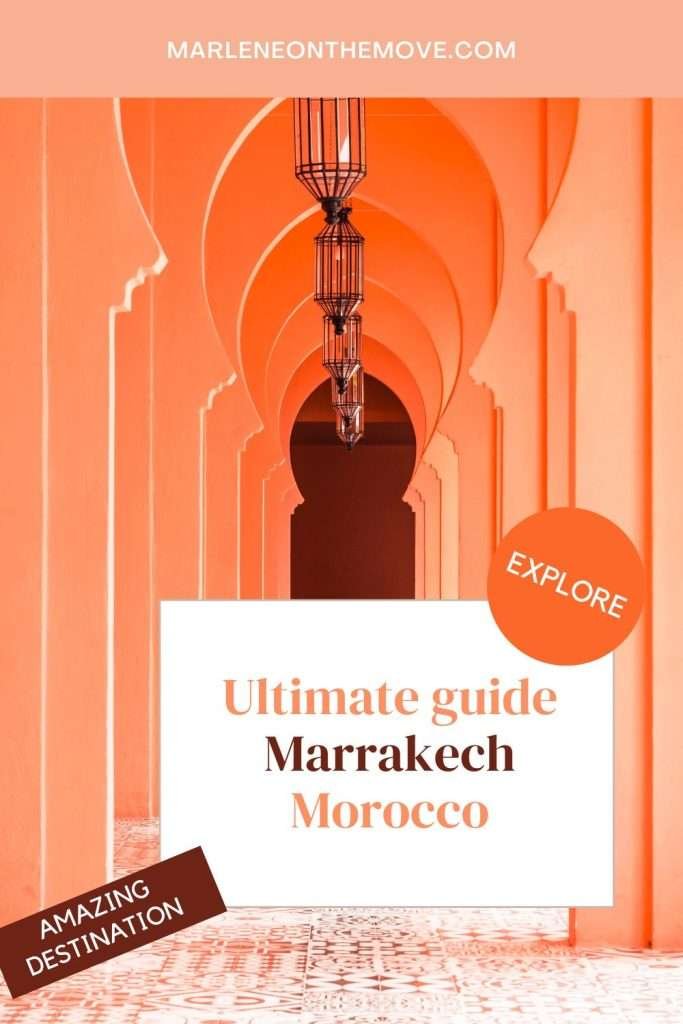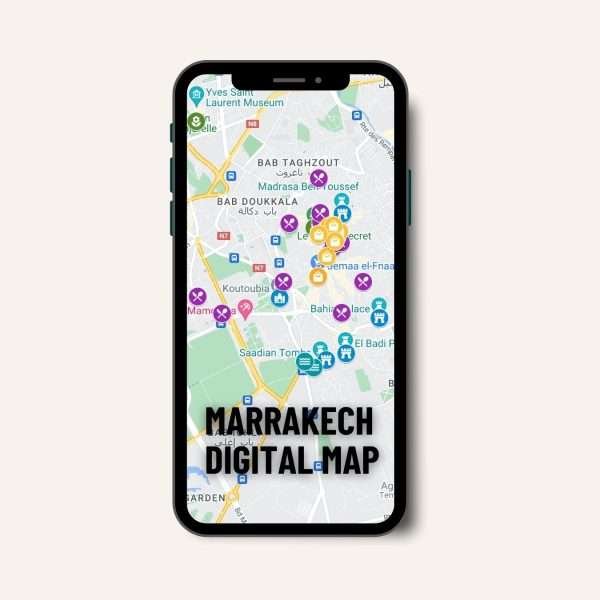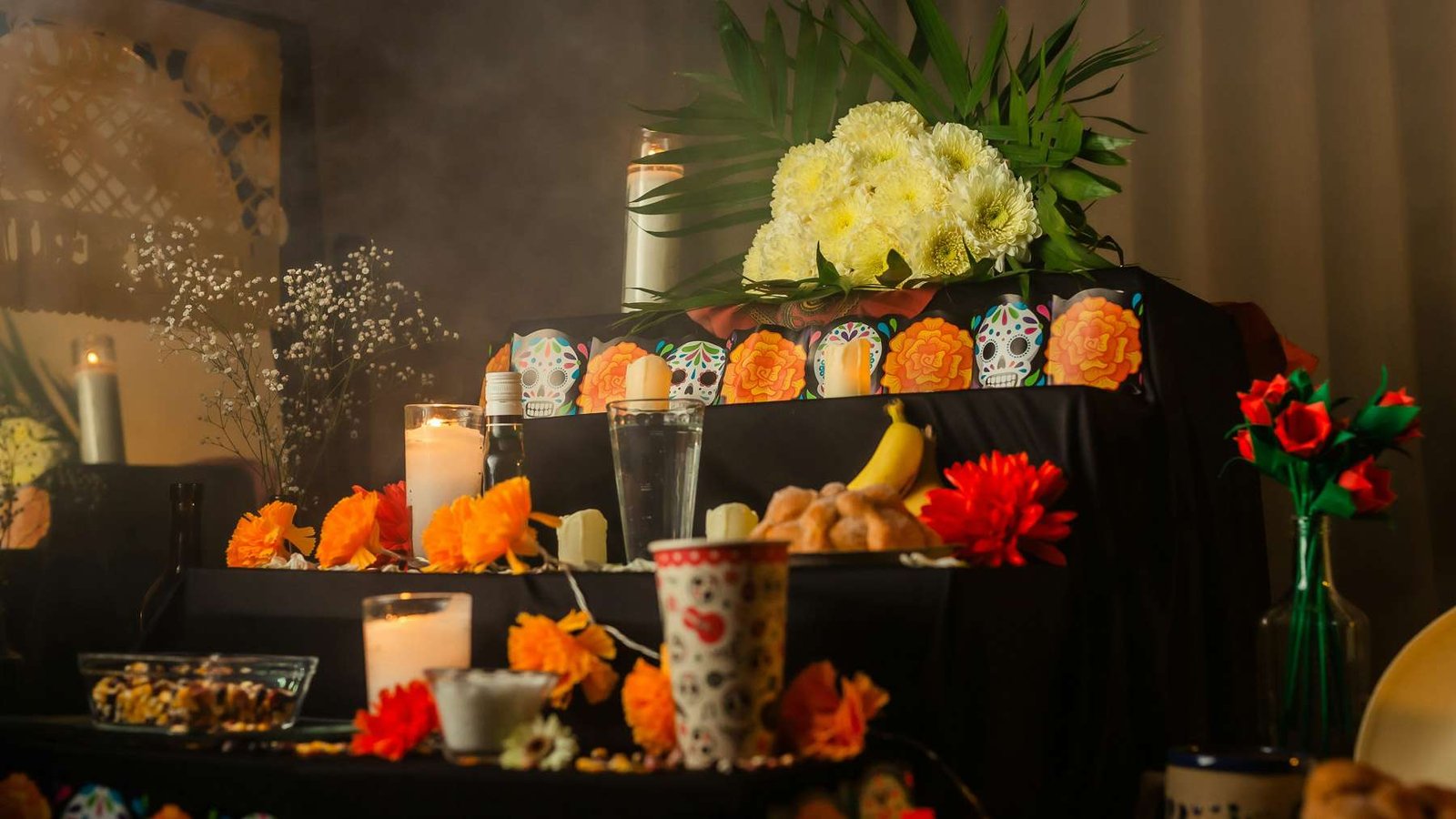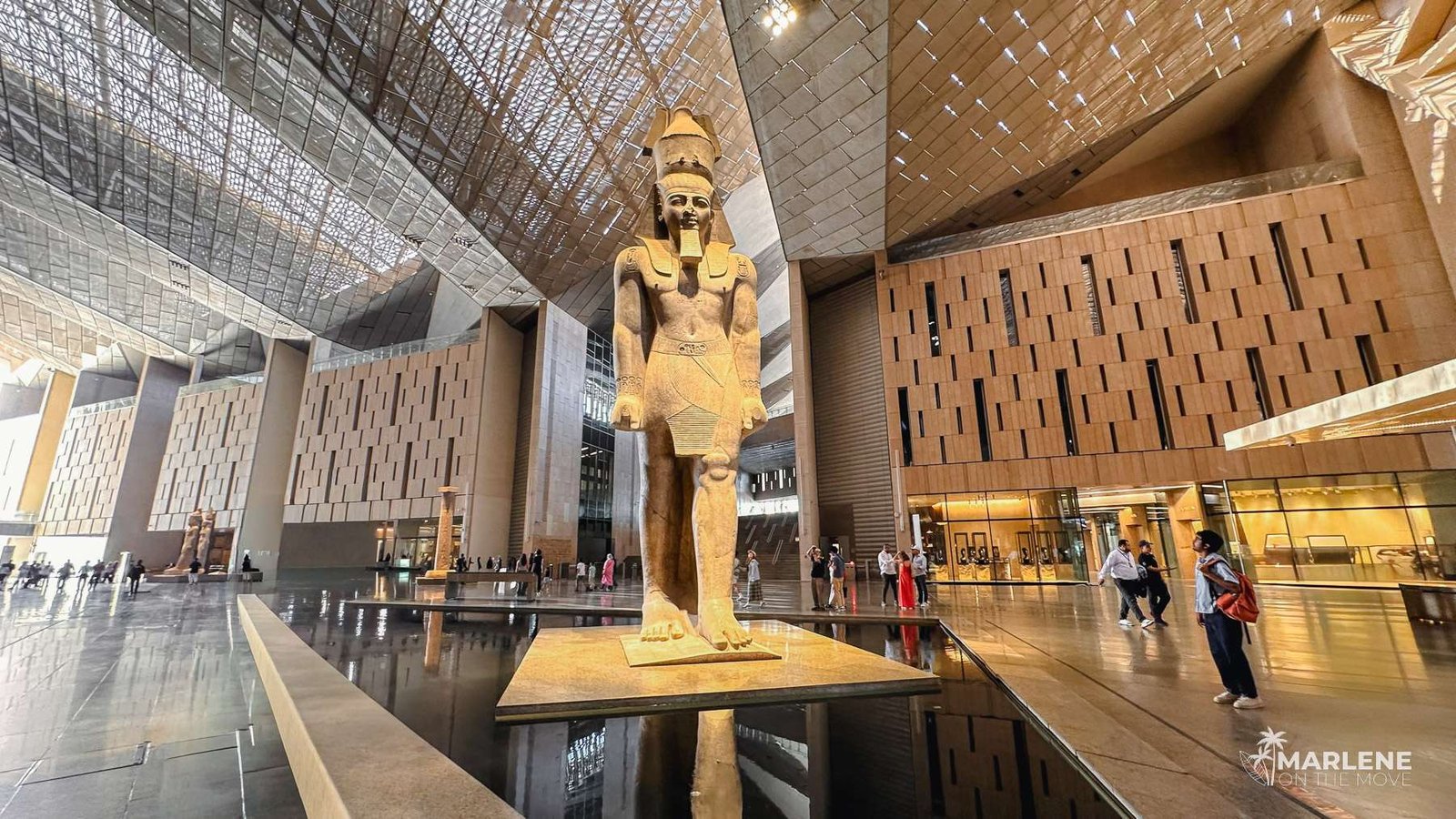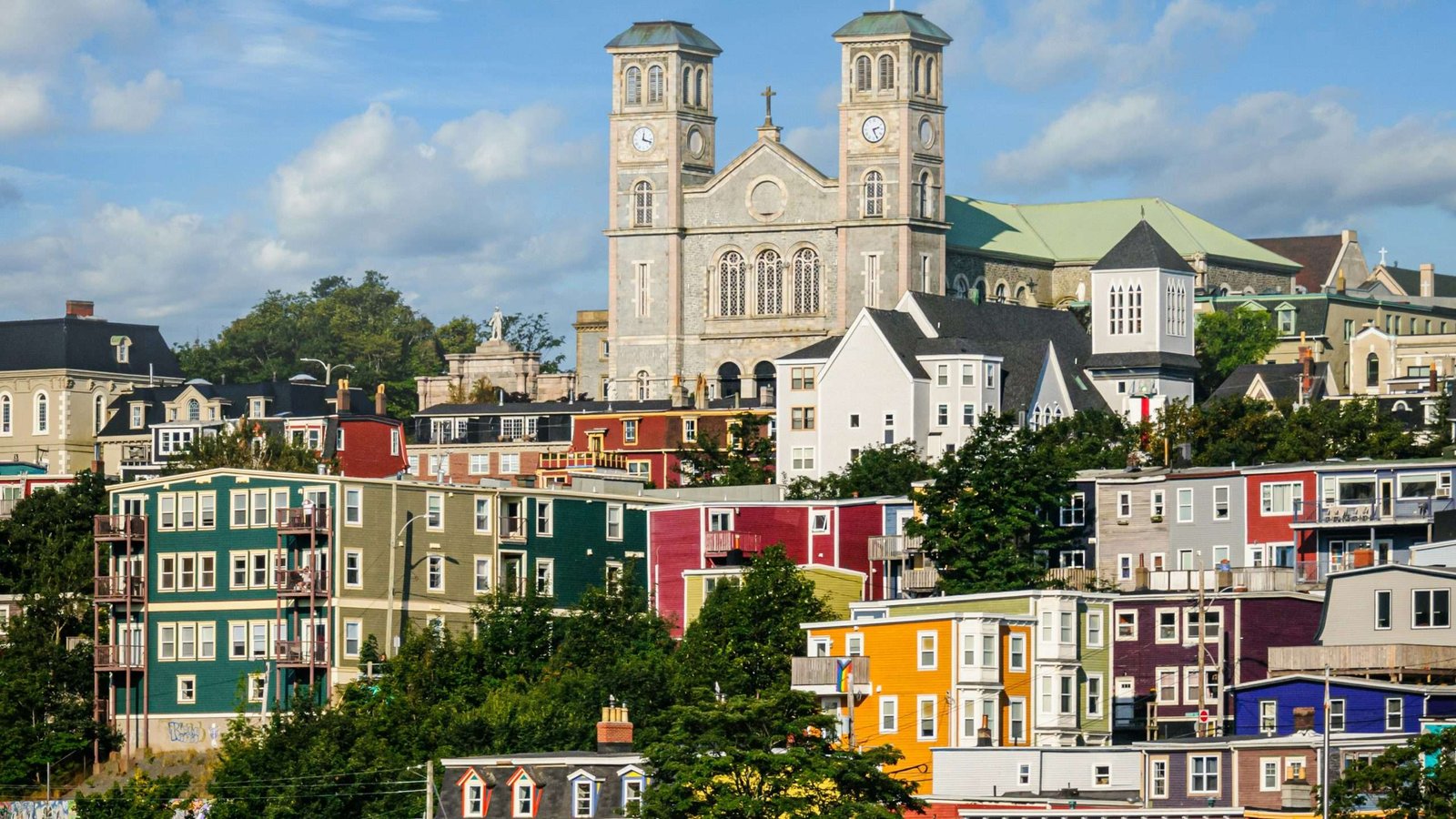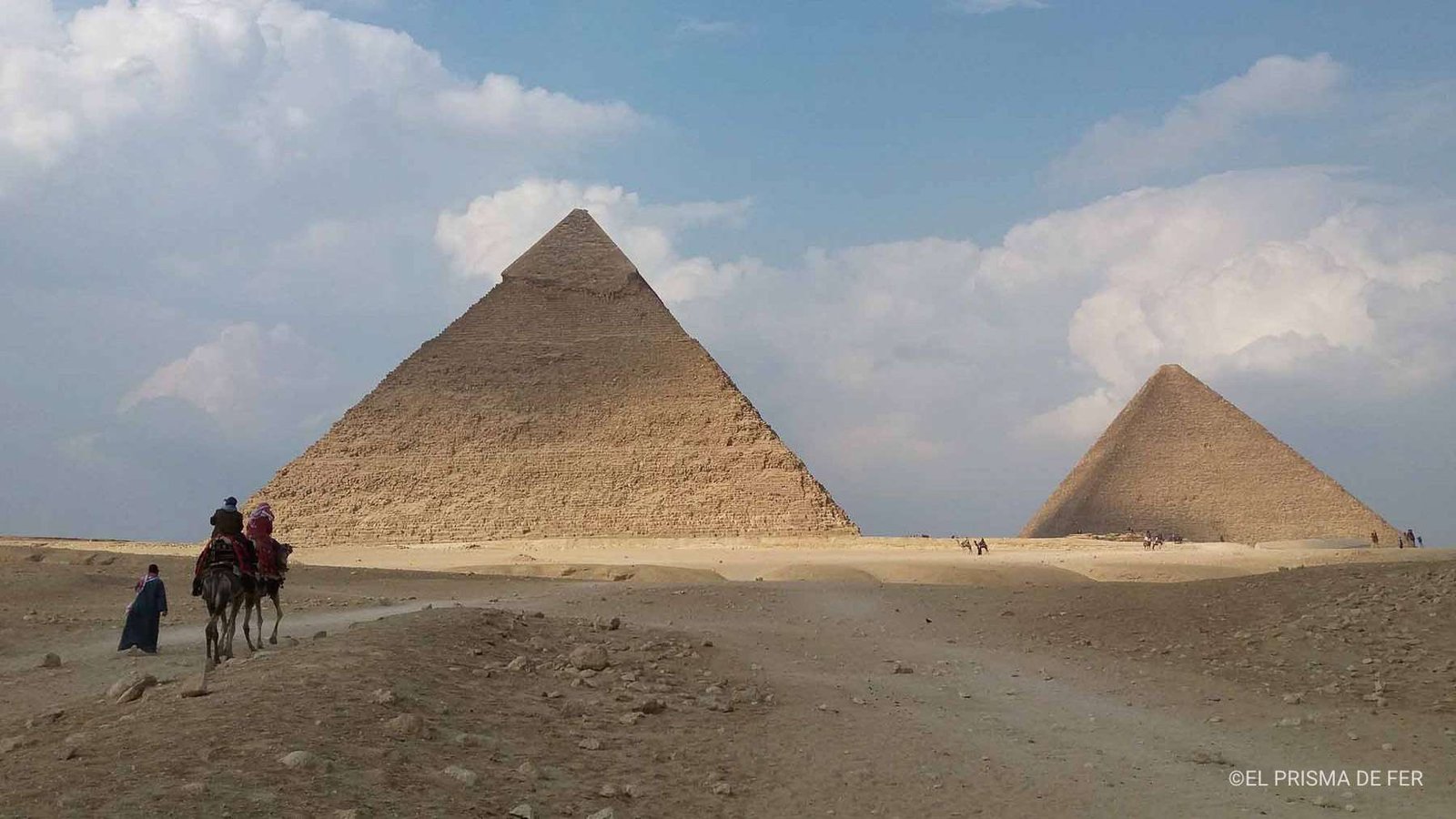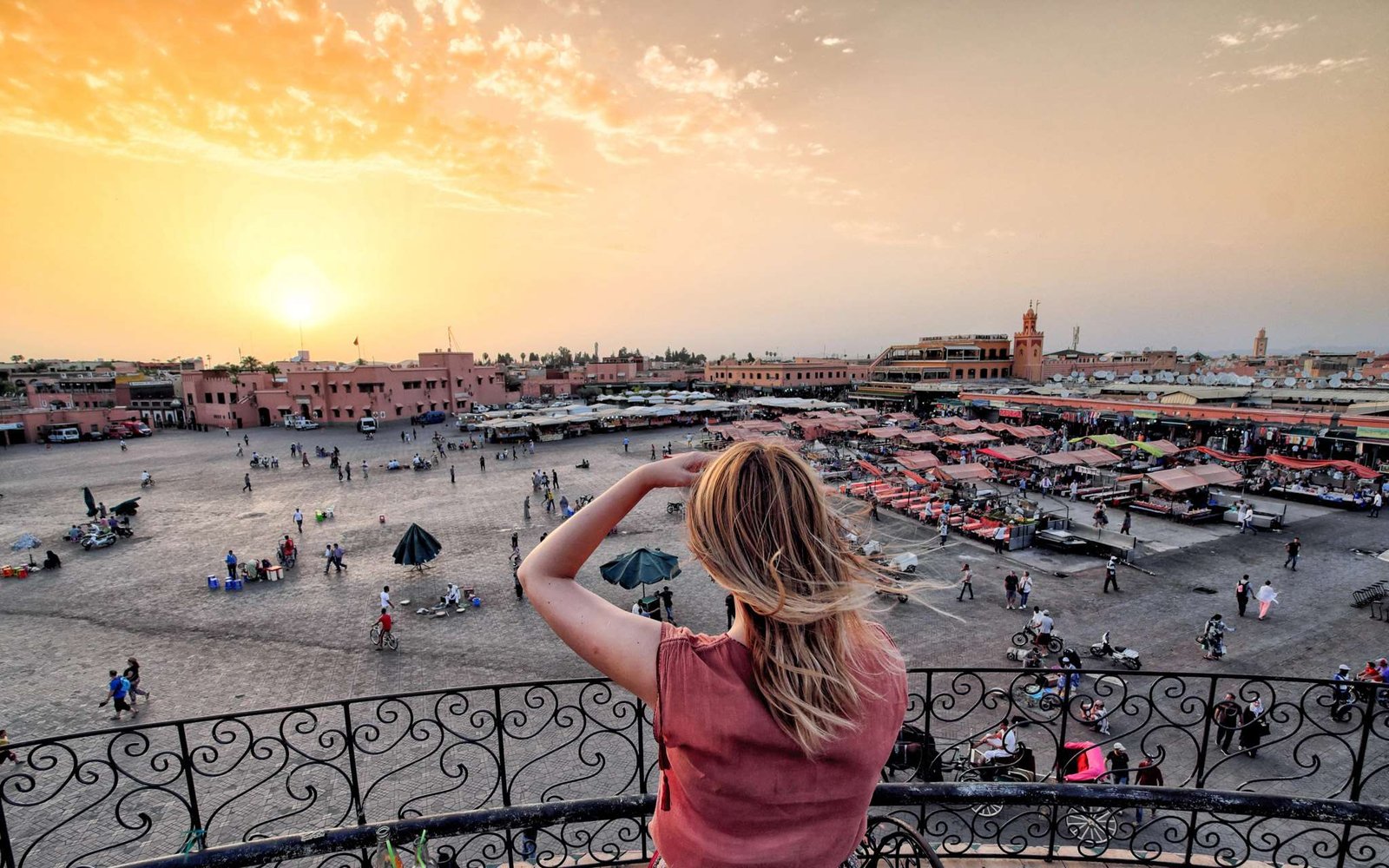
Marrakech wasn’t my first contact with Morocco but quickly became my favorite Moroccan city.
When I started leading groups of travelers to Morocco, Marrakech became my gateway to the country and the starting point for adventures to the Sahara Desert.
I remember the first time I entered the city, specifically the historic Medina, and how I was overwhelmed by the movement, the constant sounds, the aromas, and the chaotic energy that is hard to describe.
I had already visited the cities of the north of Morocco — Fes, Chefchaouen, Tetuan, and Tangier. Still, something about Marrakech distinguishes it from its northern sisters.
Some say that the city is already too touristy and crowded. Yes, that’s true. But where else can you find the modernity of today combined with the tradition of times gone by?
- What to expect on this trip
- 1. The Magic of the Medina and the Souks
- Strolling through the souks: what to buy and how to bargain
- How to avoid scams and pushy approaches
- 2. Must-see squares and monuments in Marrakech
- Jemaa el-Fna: the heart of Marrakech
- Koutoubia Mosque: the city's most iconic silhouette
- Bahia Palace: the splendor of Moroccan architecture
- Madrasah Ben Youssef: a treasure trove of Islamic architecture
- El Badi Palace: the forgotten history of the Saadians
- Saadian Tombs: the buried royal secret
- 3. Gardens you can't miss
- Majorelle Garden: Yves Saint Laurent's blue haven
- Le Jardin Secret: a hidden oasis in the Medina
- Menara Gardens: Marrakech's water mirror
- 4. Local Experiences
- 5. Outside the Medina
What to expect on this trip
Moroccan tradition is still very much present in the city, especially in its oldest part. Here, you’ll find one of the largest souks in the Arab world, a true labyrinth of streets and stores that will test even the least consumerist traveler.
On the other hand, the modernity of the Western world appears on the roofs of buildings, where the decorations, music, and conversations in foreign languages make you forget about Moroccan culture.
This dichotomy is what makes Marrakech so fascinating.
Best time to visit Marrakech
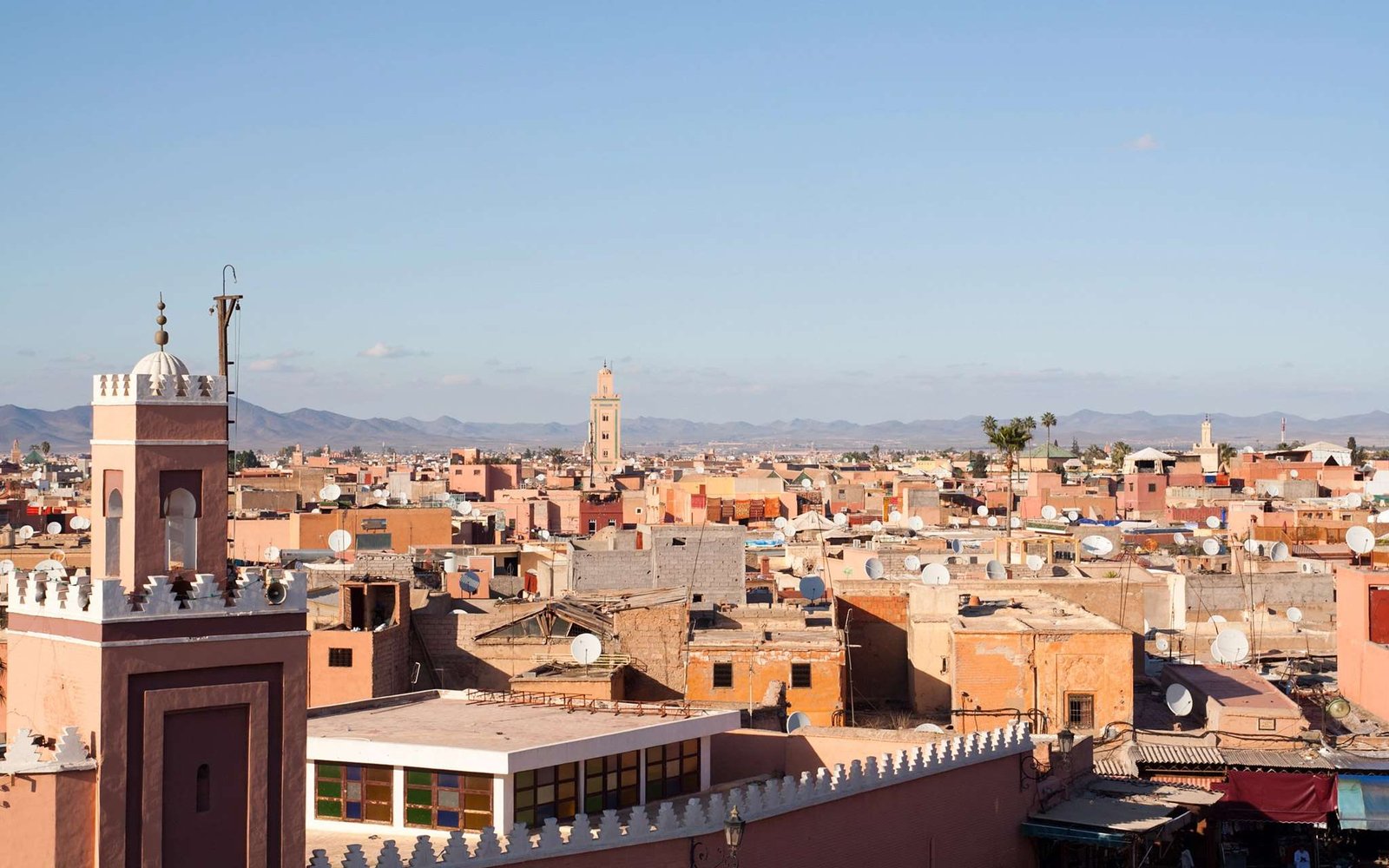
At this point, I’d like to say that the low season is the best time to visit Marrakech because you’ll find fewer people and it is a quieter city. But, these days, there’s no low season in Marrakech because the town is always visited by tourists.
But let’s break it down.
The best time to visit Marrakech is between March and May or September and November when the temperatures are perfect (between 20º and 30º Celsius). However, these are the busiest times for tourists, so expect the city to be more crowded.
You won’t find as many people between June and August. Still, the temperatures are very high, which can make sightseeing difficult. Some good restaurants are also closed for vacations. On the other hand, you can get better prices in the stores, as the vendors are hungry for customers.
December and February can also be good times to visit Marrakech and avoid the crowds. However, despite the milder temperatures during the day (between 15º and 22º Celsius), expect very cold nights and the possibility of rain.
How to get to Marrakech and around the city
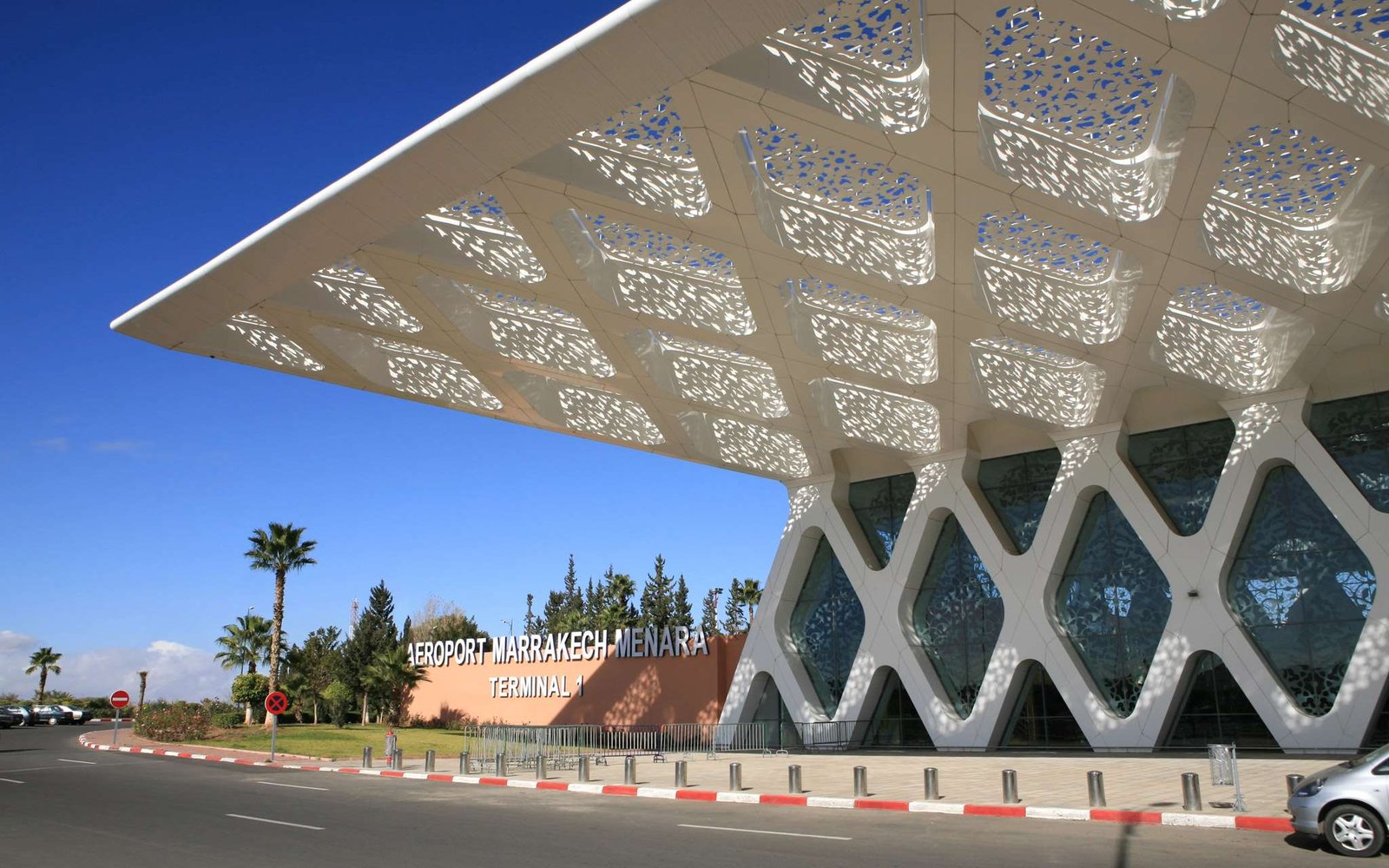
The gateway to Marrakech is Menara Airport (RAK), which receives international flights and is just 6 km from the city center.
The terminal itself is an introduction to Moroccan culture, as its architecture features traditional Moroccan elements, such as geometric patterns or muxarabis (perforated panels used in Moroccan houses).
Several airlines fly to Marrakech, connecting the city to various European destinations and beyond.
The downside of Menara Airport is that it is relatively small for the current flow of passengers it receives, which can cause delays when landing or returning home.
Be prepared to spend a lot of time at passport control or going through security. My advice is to be patient on arrival and allow plenty of time at the airport when you leave, especially in the months with the biggest influx of tourists.
Once you arrive in Marrakech, you can arrange with your accommodation to pick you up at the airport or take a cab from there to the city center. Everything is negotiated here, and cabs are no exception. As a reference, you should know that, on average, they cost between 150 and 200 Dirhams (MAD).
If you’re staying inside the Medina, forget the car. Ideally, you should do everything on foot and negotiate a cab to visit somewhere further afield, such as the Majorelle Garden (read on because I’ll talk about it later). Also, because cars don’t go inside the souk. There are a few tuk-tuks, but I think the only way to get around the markets is on foot.
Finally, there are also horse-drawn carriages for touring the Medina. Moroccans themselves use them a lot, but I don’t recommend it.
Marrakech Digital Map
Discover Marrakech without losing your way! The Marrakech Digital Map features a PDF guide and a Google My Maps file, including monuments, souks, restaurants, and other essential (and tested) locations to enhance your trip.
What to see and do in Marrakech
1. The Magic of the Medina and the Souks
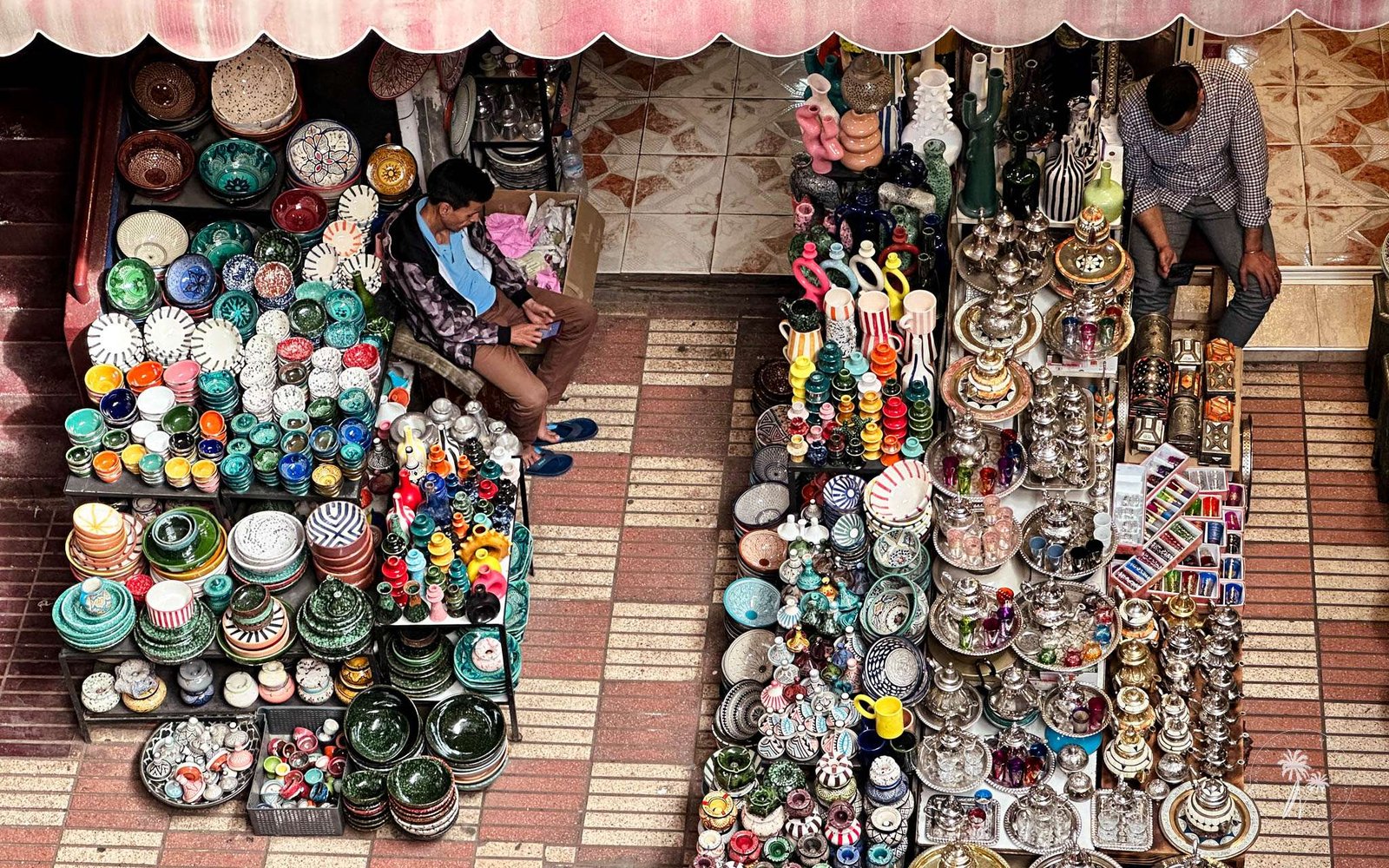
Strolling through the souks: what to buy and how to bargain
“Oh, I’ll just take a souvenir magnet.” I can’t tell you how often I’ve heard this phrase from the travelers I’ve taken to Marrakech, only to see them hours later, with bags in hand and calculating the weight and free space in their suitcases.
As I said at the beginning, Marrakech’s souk is one of the largest in the Arab world. It’s almost impossible to walk through it without being attracted by the colors, aromas, and products sold there.
This veritable labyrinth can be daunting for first-time visitors, but if you give it time, you’ll realize that in the midst of chaos, there is organization.
There are several entrances to the souk, and several of them start from Jemaa el-Fna Square, the heart of Marrakech.
In fact, it’s said that all roads lead to Jemaa el-Fna, and if you feel lost, don’t worry, you’ll get there eventually.
Marrakech’s market comprises multiple souks, each dedicated to a different type of product made and sold there. There’s a souk for shoes, another for spices, one where metal is crafted, and another where wood is shaped.
Wherever you go, negotiating prices is a must. If the product has a marked price (like magnets, for example), negotiation isn’t an option. However, haggling is usually part of the experience, and prices can drop by up to 50% from the initial offer.
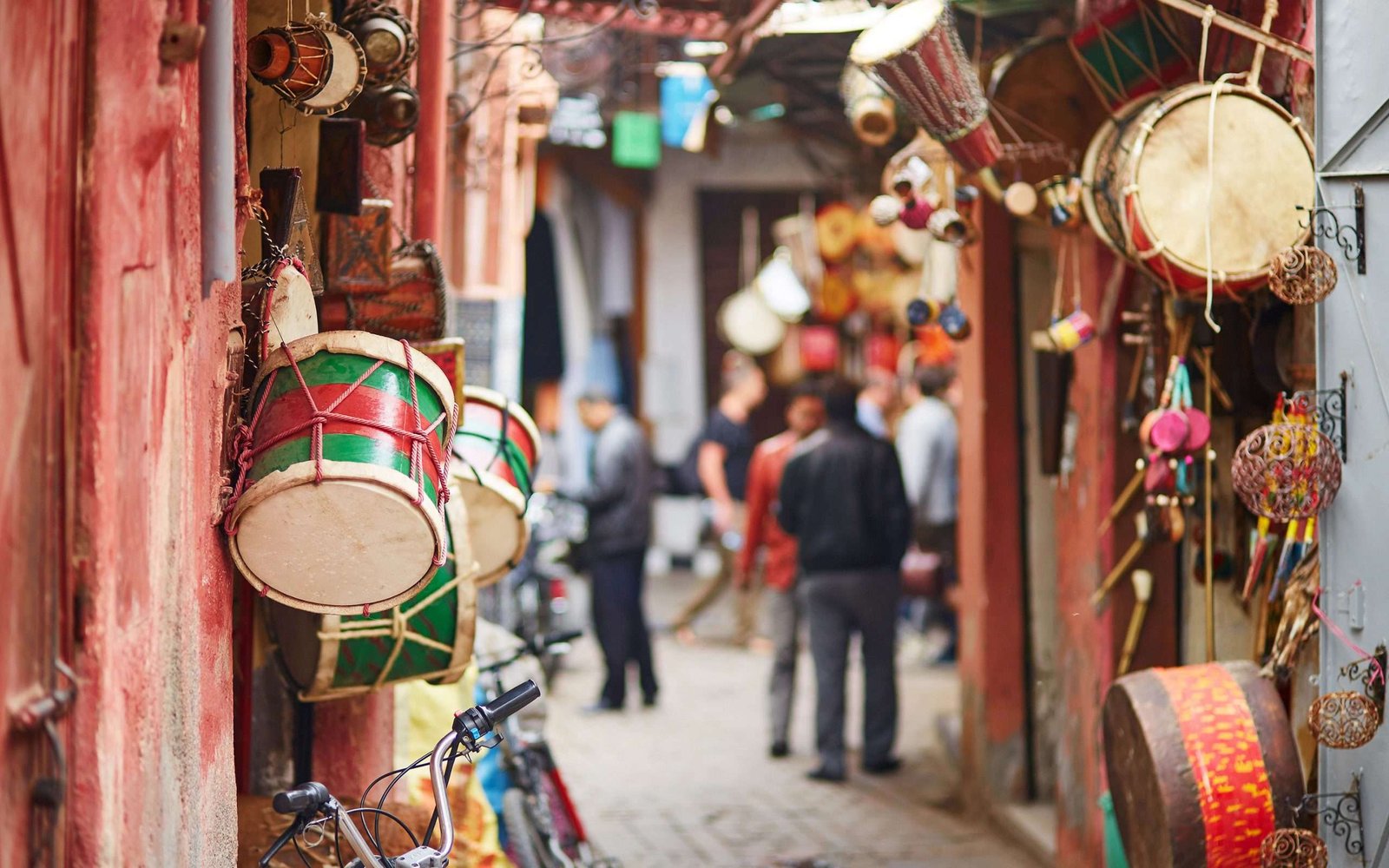
How to avoid scams and pushy approaches
Like any busy tourist destination, Marrakech can also fall victim to scams or pushy approaches.
I don’t know of any violent crimes, but you’re not safe from the usual thefts. However, you can take a few precautions to ensure that your vacation ends on a positive note.
- Take only the essentials with you and leave the most valuable things at the hotel
- Always wear a shoulder bag or backpack facing forward, especially on busy streets.
- If you carry a cell phone, wear a chain around your wrist or neck or put it away when you’re not using it.
One of the best-known scams in Marrakech is when someone offers to guide you through the streets of the Medina. Bear in mind that these are not official guides and will demand a high payment from you in the end.
These so-called ‘guides’ and some taxi drivers may lead you to ‘authentic’ carpet or argan oil stores, where they pressure you to buy.
Others may claim a street is closed, only to guide you through a ‘shortcut’ and charge you for the tip.
These are just some of the scenarios you may face. But if you find yourself in one of these situations, gently decline with a “Non, merci” or a “La, shukran” (both mean “No, thank you”).
Walking confidently and not looking directly at a salesperson for too long (which can be seen as being interested in a purchase) can also work wonders.
If you’re lost, keep calm and try to find an older store owner who doesn’t seem too interested in your presence to ask him the way to Jemaa el-Fna Square… after all, all roads lead to the square!
2. Must-see squares and monuments in Marrakech
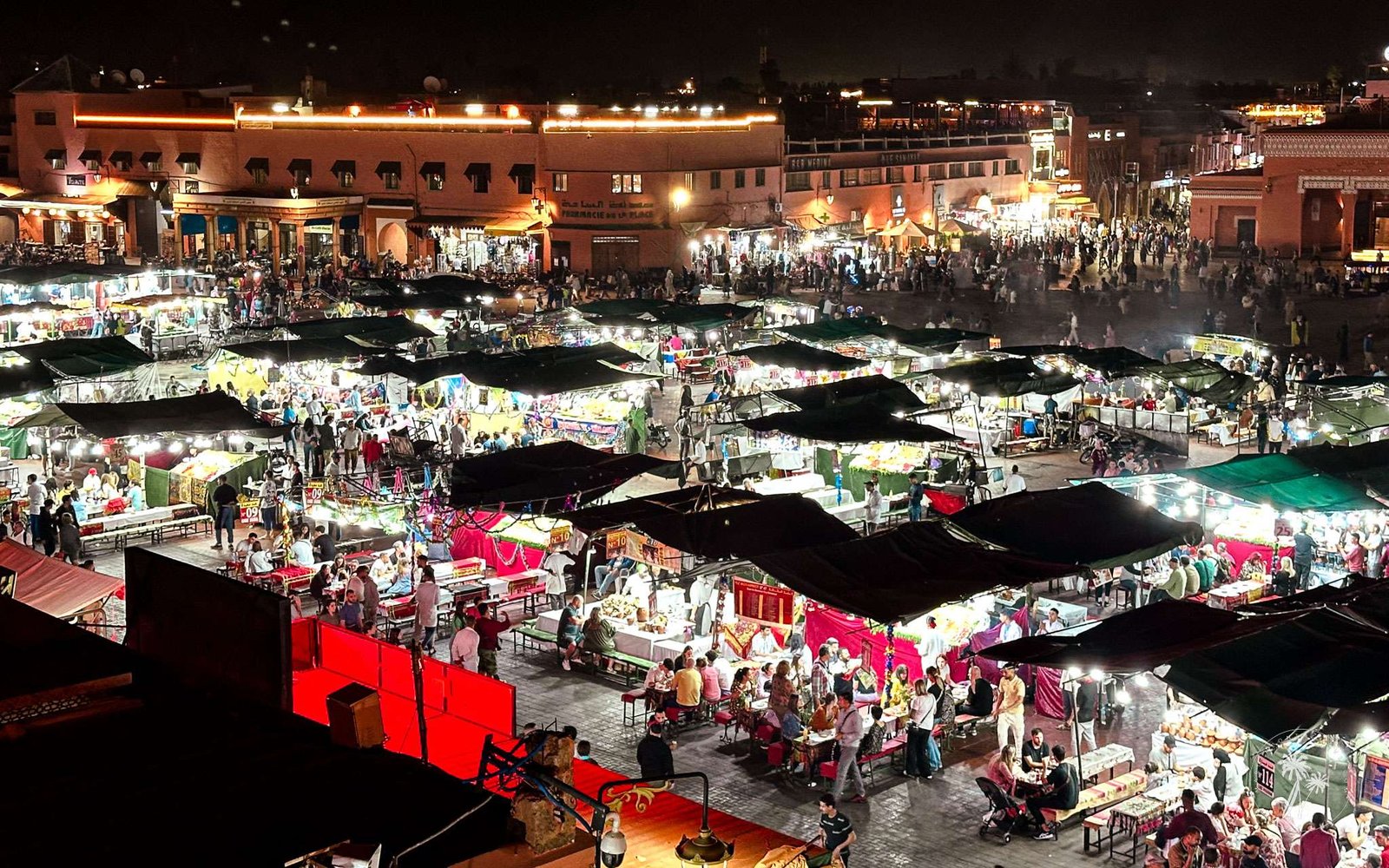
Jemaa el-Fna: the heart of Marrakech
I’ve already mentioned Jemaa el-Fna Square several times throughout this article, so it’s not surprising that it tops this list of places to visit in Marrakech.
Jemaa el-Fna’s history dates back to the 11th century, during the reign of the Almoravid dynasty. Since then, it has been Marrakech’s social and commercial epicenter, a meeting place for travelers, merchants, and artists.
This place irresistibly draws you in!
UNESCO recognized its importance by classifying it as an Intangible Cultural Heritage of Humanity in 2001, protecting its unique oral traditions, performances, and rituals.
Today, it remains one of the most iconic places in the Arab world. In this open-air theater, Moroccan culture manifests itself in all its intensity.
During the day, the square is apparently calm, with orange juice sellers vying for tourists’ attention, snake charmers hypnotizing the animals with the frenetic sound of their flutes, and women with henna needles trying to tattoo the wrists of passers-by.
At sunset, everything changes. The square turns into a vast open-air restaurant with grill stalls, typical dishes, and men trying to lure you to their tables.
The smoke from the braziers mixes with the sounds of the Gnawa musicians’ drums, and when the hour dedicated to devotion strikes, the call to prayer envelops the place.
It’s a confusing but fascinating spectacle. Jemaa el-Fna Square is one of those places that you can’t just see. You really have to feel it.
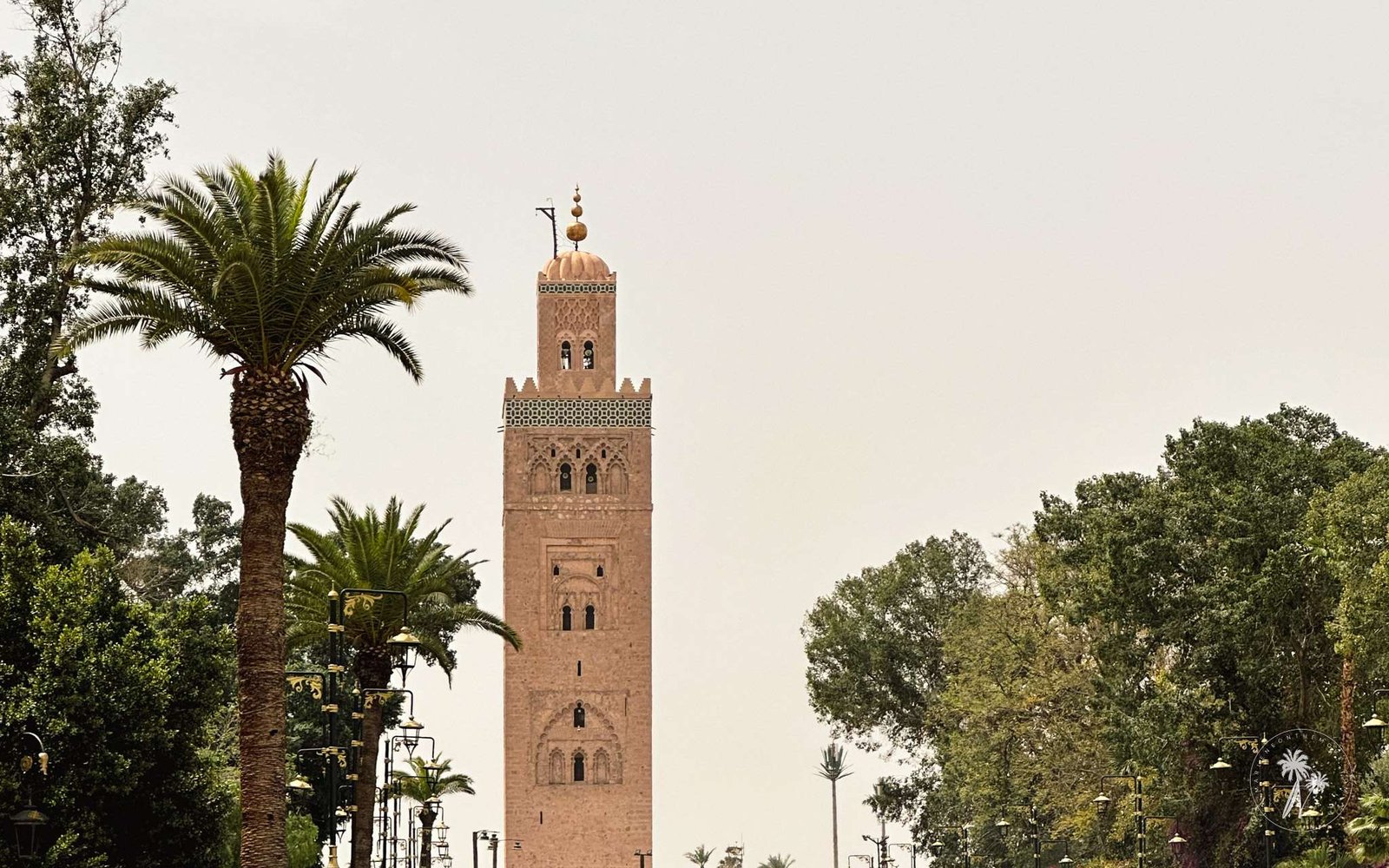
Koutoubia Mosque: the city’s most iconic silhouette
With an imposing 77-meter-high tower dominating the cityscape, the Koutoubia Mosque is impossible to ignore.
Built in the 12th century, this mosque is one of the most outstanding examples of Almohad architecture. It’s believed to have been the inspiration for Seville’s Giralda.
Non-Muslims cannot enter, so you’ll have to admire it from the outside. But wait until the end of the day, when the warm sunlight paints the minaret with golden hues, and I promise you’ll get a beautiful picture of this monument.
By the way, the garden around the Koutoubia is excellent for resting away from the frenetic pace of the square and the souks.
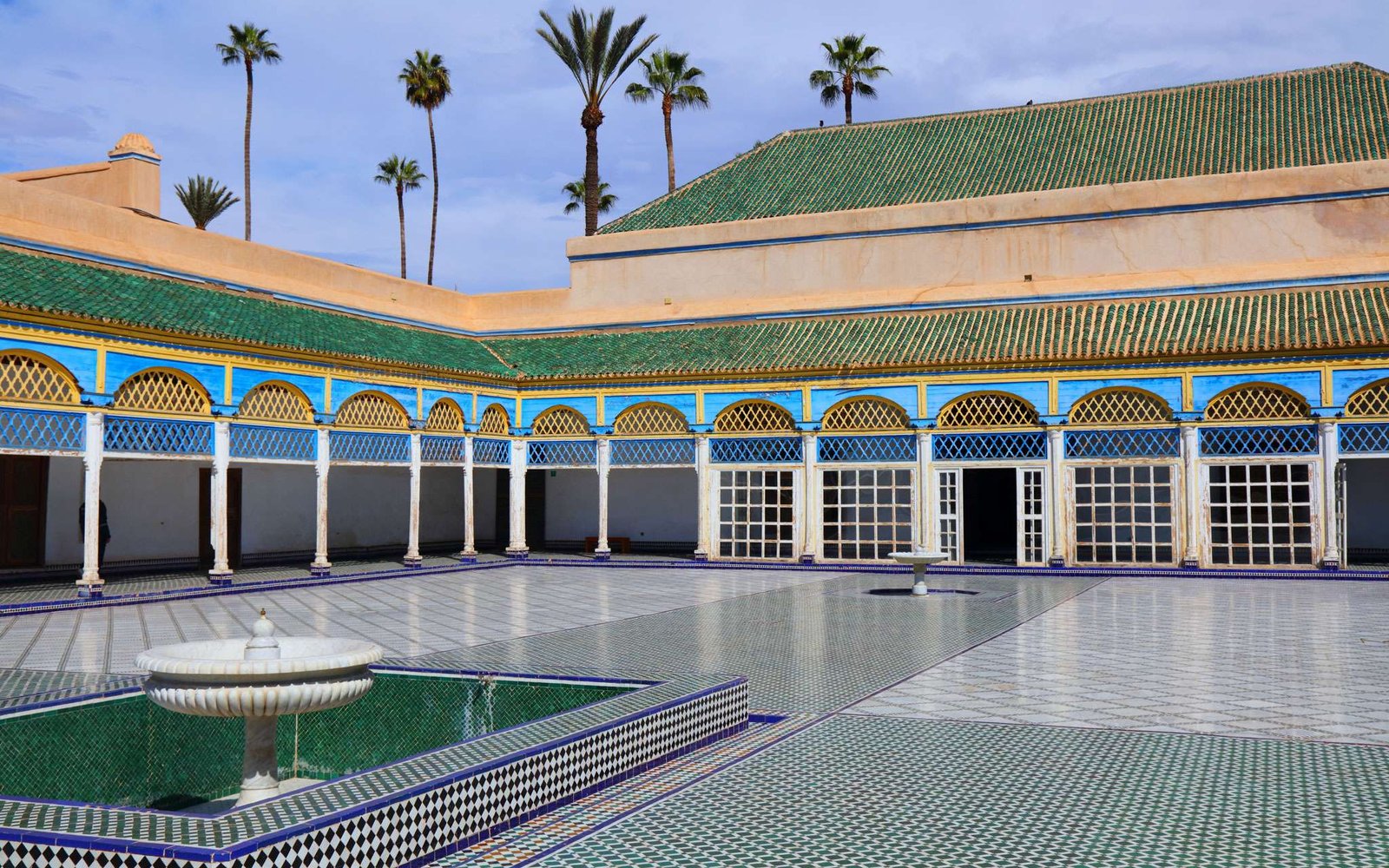
Bahia Palace: the splendor of Moroccan architecture
As you explore the Bahia Palace, you’ll enter a labyrinth of richly decorated rooms, courtyards with orange trees, and hand-painted ceilings.
A Grand Vizier built the palace in the 19th century, designing it to be Marrakech’s most sumptuous, a vision reflected in every detail.
Walk through the zellige tiled corridors and carved wooden doors. Every corner has a new secret courtyard, a play of light across the lacy tiles, or a marble fountain.
The name “Bahia” is said to mean “brilliant” or “dazzling,” and once you’ve visited it, you’ll understand why.
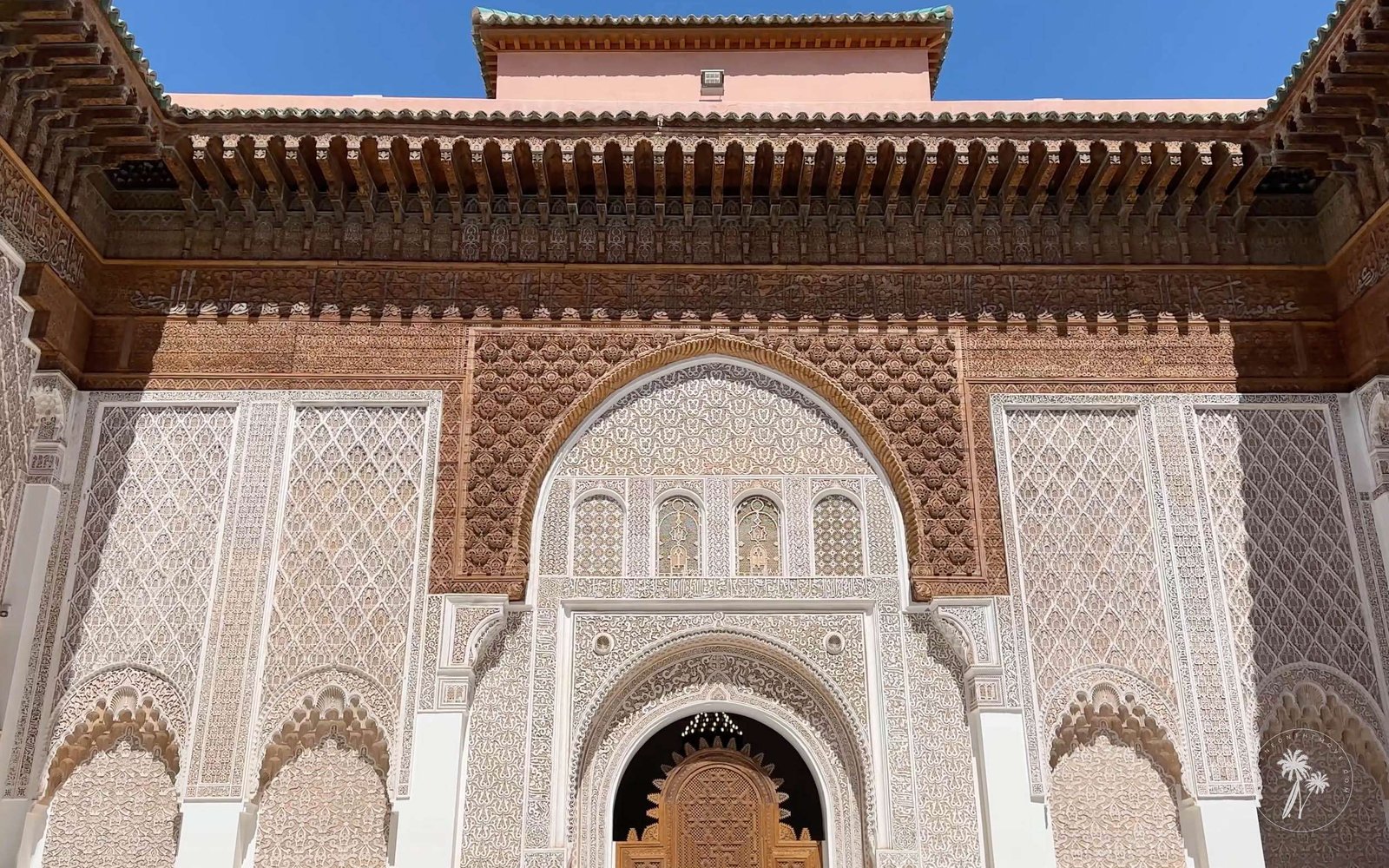
Madrasah Ben Youssef: a treasure trove of Islamic architecture
To enter the Madrasah Ben Youssef is to immerse yourself in one of the greatest legacies of the Saadian dynasty.
Founded in the 14th century and enlarged in the 16th century, this former Koranic school was the center of Islamic education in Marrakech for centuries, accommodating nearly 900 students in its small cells.
The real charm of this place lies in its architecture: an imposing central courtyard decorated with zellige tiles, carved arabesques, and finely crafted cedar wood. The sound of water from the central fountain echoes through the space.
Walk through the corridors and peer into the austere alumni rooms to notice the contrast with the ornamental richness of the whole building.
It was an era when knowledge and spirituality went hand in hand. Although the madrasah no longer welcomes students, it remains one of the most fascinating places in Marrakech.
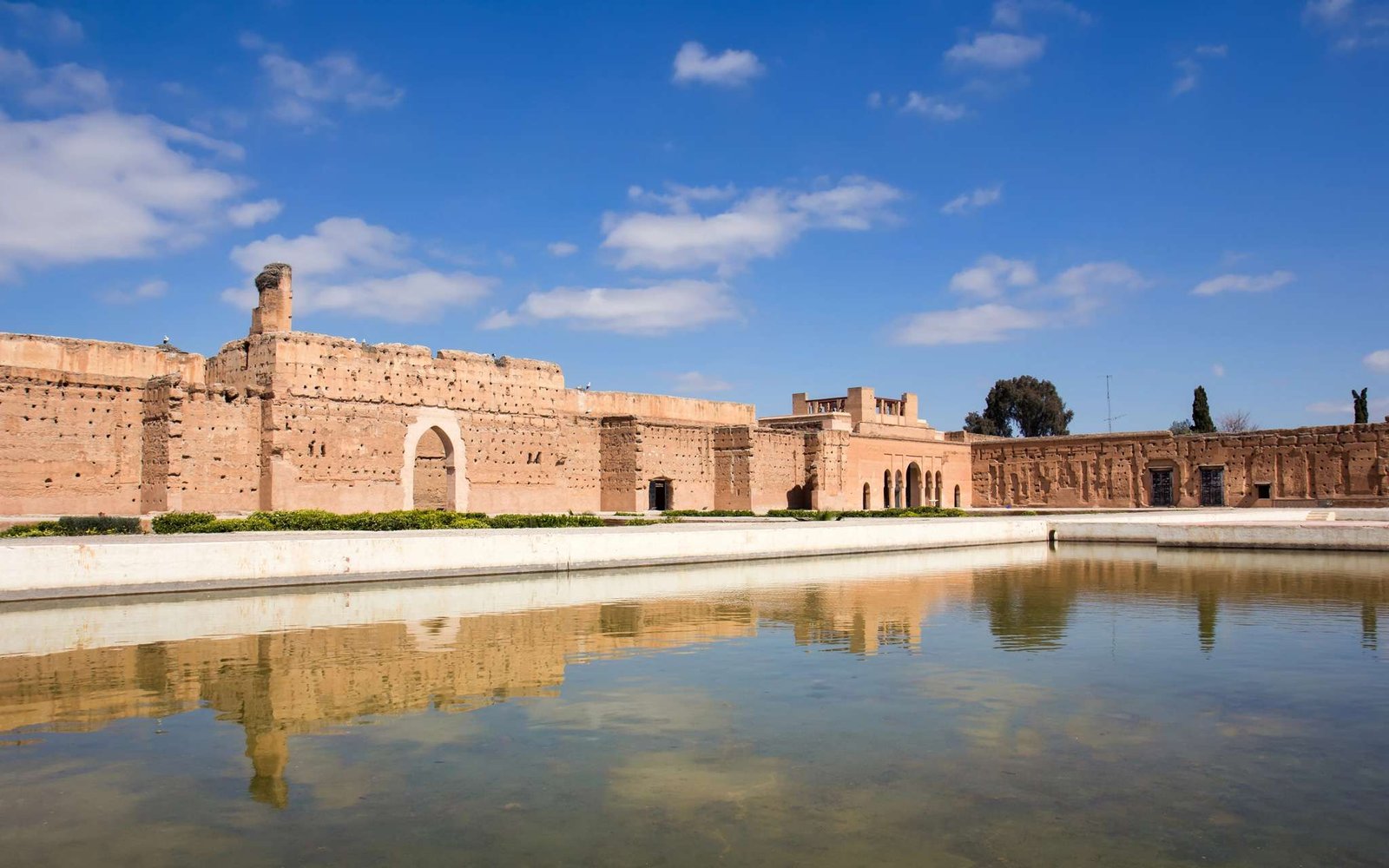
El Badi Palace: the forgotten history of the Saadians
If the Bahia Palace impresses with its details, the El Badi Palace fascinates with its ruins.
Built by the Saadian Sultan Ahmed al-Mansour in the 16th century, this palace was once one of the most luxurious in the Arab world. Gold, Italian marble, and tiles brought from Fez decorated its huge courtyards.
But this splendor was short-lived. In the 17th century, the Alawite sultan Moulay Ismail ordered the palace to be dismantled so that the materials could be used in Meknès.
Today, all that remains are the adobe walls and the immense gardens, now inhabited by storks that nest at the top of the walls.

Saadian Tombs: the buried royal secret
For centuries, walls concealed the Saadian Tombs, leaving them forgotten by time. In 1917, the French rediscovered them, revealing the magnitude of this royal mausoleum.
The sultans of the Saadian dynasty, including Ahmed al-Mansour, who built the El Badi Palace, are buried here.
The most imposing tomb is the Hall of the Twelve Columns, with Italian marble, tiles, and gold inscriptions decorating the tombs.
Despite the enclosure’s small size, the atmosphere is solemn. Light enters through the colored stained glass windows, illuminating the geometric mosaics and giving this place even more charisma.
3. Gardens you can’t miss
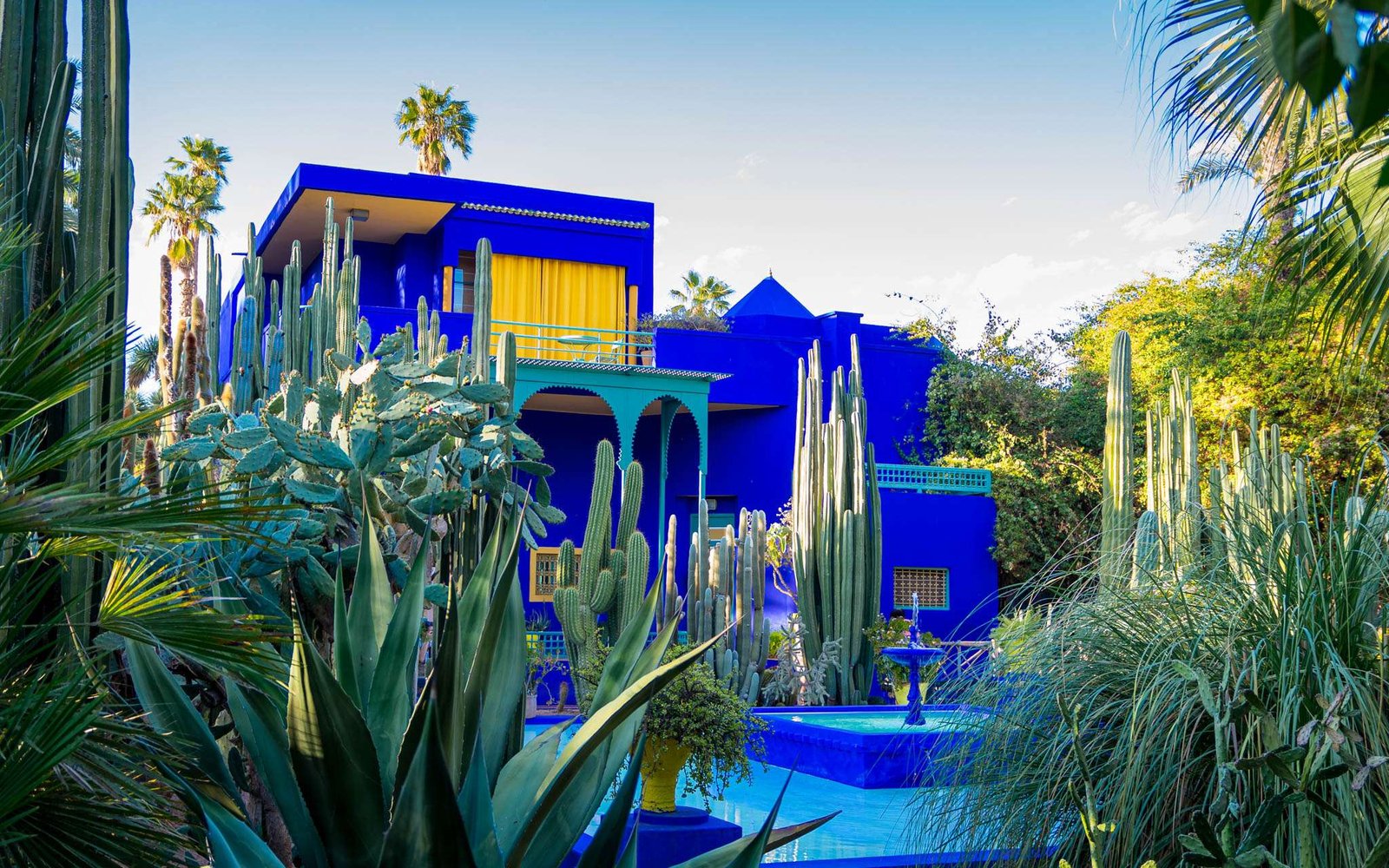
Majorelle Garden: Yves Saint Laurent’s blue haven
Escape the chaos of the Medina to visit the Majorelle Garden, a real oasis on hot days in Marrakech.
Created by the French painter Jacques Majorelle in the 1920s, this incredible garden combines Arabic and Art Deco influences. It features fountains, exotic cacti, and the unmistakable cobalt blue of the walls and structures.
Yves Saint Laurent and Pierre Bergé found inspiration in this haven and acquired the garden in 1980 to preserve it. The space has become a botanical and artistic sanctuary, where you can also visit the Berber Museum.
Saint Laurent’s legacy endures here, with his ashes scattered in the gardens as a tribute to his passion for Morocco.

Le Jardin Secret: a hidden oasis in the Medina
Far from the hustle and bustle of the souks, the heart of the Medina hides one of Marrakech’s best-kept secrets: Le Jardin Secret.
This space originated in the Saadian era in the 16th century and has recently been restored to its original glory.
Le Jardin Secret features two distinct areas: an exotic garden with plants from around the world and an Islamic garden designed with ancient principles of balance and spirituality.

Menara Gardens: Marrakech’s water mirror
With the Atlas Mountains as a backdrop, the Menara Gardens offer one of Marrakech’s most iconic postcards.
Built in the 12th century by the Almohad dynasty, these gardens were a place of leisure for the sultans.
In the center is a large artificial lake reflecting the historic pavilion’s contours and the centuries-old olive trees surrounding it.
4. Local Experiences
In addition to the souks and iconic monuments, other local experiences make Marrakech unique.
Starting with the Hammam bath. If you like (strong) exfoliating massages, this treatment is for you!
The hammam, also known as a Turkish bath, is a wellness ritual that uses heat, steam, and exfoliation to cleanse and invigorate the body. In Morocco, hammams are part of daily life and are places for socializing and relaxing.
To try these baths, you can visit a more traditional hammam (there are ones for men and women) or the spa at your hotel or riad.

Also, going to Marrakech and not indulging in the local flavors makes no sense.
Moroccan cuisine has Arab, Berber, Mediterranean, and African influences. It draws many flavors from spices such as cumin, saffron, cinnamon, ginger, and elements like dates, almonds, honey, olives, and lemon.
You must try Tajine (a stew made in a clay pot), Couscous, Pastilla (stuffed puff pastry), and Harira (tomato, lentil, chickpea, and spice soup). Mechoui, a slow-roasted lamb dish, is another one to try, but it may not suit everyone’s taste.
Marrakech is full of good restaurants. You can taste these dishes in the more traditional restaurants or at Jemaa el-Fna Square, or choose one of the city’s more modern restaurants.
Don’t forget to go up to one of the many rooftops in the Medina, if not to eat, to watch one of the most beautiful sunsets of your trip while sipping a nice mint tea.
Finally, if you still have room for more Moroccan culture, the Marrakesh Museum, the Marrakesh House of Photography, and the Dar Si Said Museum are three other interesting places to visit in the city.
5. Outside the Medina
Marrakech isn’t just about the frenetic energy of the traditional Medina. Outside, there’s a more modern, even westernized Marrakech.
The Guéliz district, where most of the headquarters of institutions and companies are located, and the Hivernage district, with its luxury hotels and restaurants and trendy nightclubs and bars, are areas of the city you’ll want to visit.
On the other hand, if you want to continue feeling the real Moroccan vibe, head to La Palmeraie, an oasis of more than 13,000 hectares filled with hundreds of thousands of palm trees. You can ride a camel or rent a quad bike and explore the area here.
Finally, if you have time to spare, why not get out of the city and tour the Great Atlas and the Ourika Valley? Also, visit the Agafay Desert, just an hour from Marrakech, or venture further to Ait Benhaddou, a World Heritage Site and filming location for Gladiator and Game of Thrones.

Practical tips for surviving in Marrakech
- Safety: Keep calm when approached and respond politely, “Non, merci“. Also, respect the locals and avoid photographing people and places without permission.
- How to dress: Opt for light, breathable clothing. Wear garments that cover your shoulders and knees, especially in more traditional places in the Medina, such as the Madrasah Ben Youssef.
- Internet and connectivity: To avoid high roaming charges, use an eSIM that guarantees a stable connection without changing your physical card.
- Currency exchange and payments: Withdraw cash at ATMs or use exchange offices, as some places don’t always accept ATM cards. Don’t forget to change back your money before returning home, as they are unlikely to do so outside Morocco.
- Language and communication: Knowing a few words in Arabic or French can make negotiating and interacting with the locals easier.
- Health: Drink only bottled water and avoid drinks with ice or street food that seems more dubious. Taking stomach medication can also be a good idea.
Marrakech is not a destination you visit. It’s a place you feel.
It’s the sound of the call to prayer at first light and at the end of the day, the vibrant colors of the souks, the sweet aroma of mint tea, and the smoke from the food stalls in Jemaa el-Fna.
Here, time is not measured in hours but in moments: a glance exchanged with an artisan, a negotiation that turns into a conversation, the contemplative silence of the sunset from a rooftop.
Marrakech is all of these things. It’s chaos, tradition, discovery, and, above all, an invitation to get lost.
And when you finally leave, you realize that you’ve taken a little bit of this city with you. Forever.
The Best Marrakech Guide
